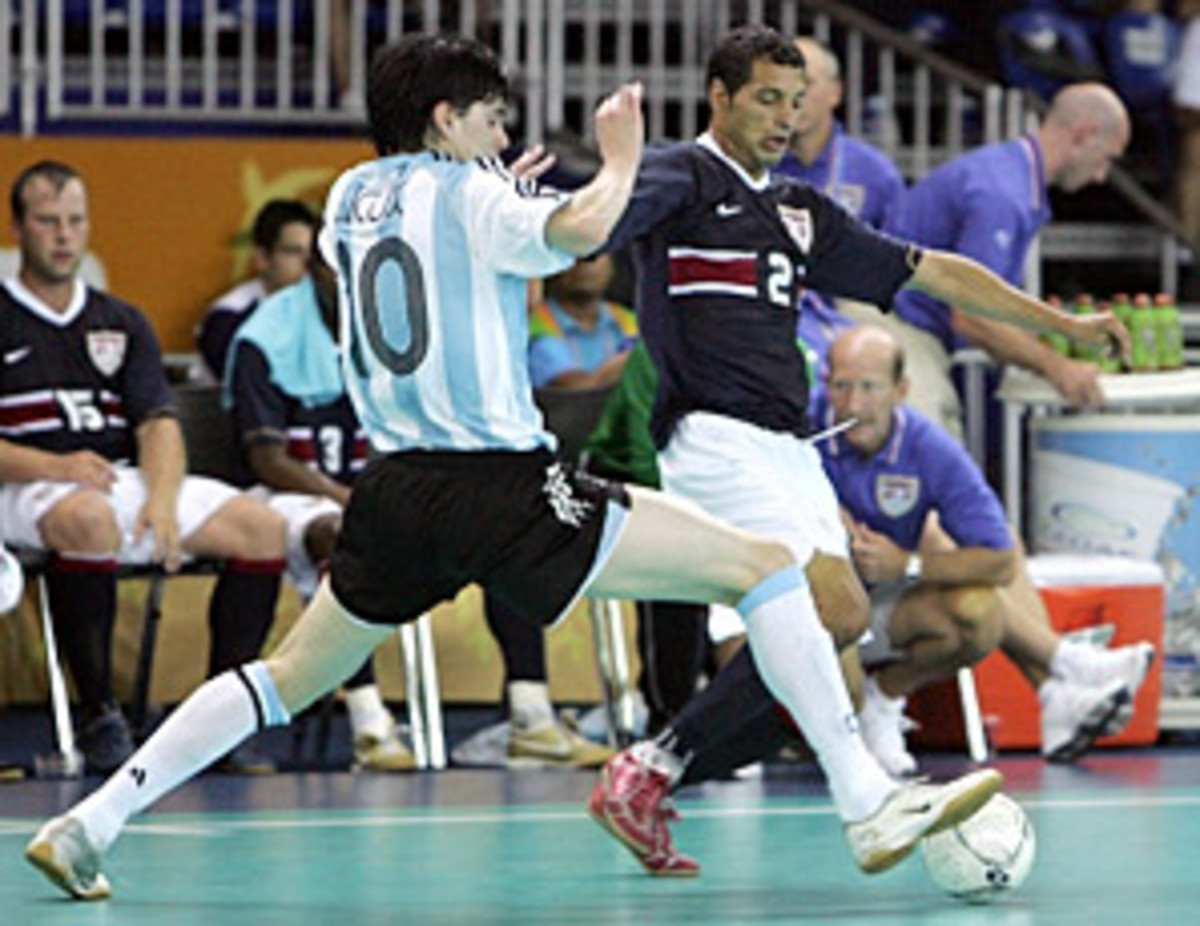MLS getting what it pays for
Too bad.
Ball, who currently plays for the Rochester Rhinos, has been one of the most consistent professionals in this country for the past decade or so. I played against him back in 1998 when he was with the Staten Island Vipers, and he was by far the best player on the field. But other than a cup of coffee with the Chicago Fire in 1999 -- nine appearances, one playoff goal -- Ball has spent his career bouncing around the now-defunct A League, the USL, and the indoor leagues.
So on Sunday night as I watched the 35-year-old Ball playing for the Rhinos against the Charleston Battery in the USL-1 playoffs, I wondered: Why did John Ball never make the permanent jump to MLS?
Some might argue, well, he had his shot in 1999 and he didn't stick. There's a sliver of truth to that. But the root explanation is much easier to pin down: money.
The reality is, although Ball is better than the majority of midlevel MLSers, he was always made more money in the lower divisions. He's not alone in this. Many good players are doing better down there, playing both outdoor and indoor and coaching on the side.
This is a consequence of several factors: 1) Ball and his ilk never saw the larger picture that an MLS career had a better chance of growing his prospects (overseas transfers, national team looks, publicity, etc.), and 2) the strict MLS salary situation.
This past week in Chicago, the bigwigs got together to discuss the state of the league. No one has really divulged details, but it's assumed that scheduling, squad size, and -- most important -- the salary cap, were discussed. I'm sure AEG president Tim Lieweke's proposal to have Designated Players removed from the salary cap was a hot topic among the board of governors and GMs. (My quick opinion: Lieweke's absolutely right.)
What will MLS look like if the salary cap is expanded? Or if the $400K that currently charged to the DP is given back?
Well, first of all, don't expect another couple of Taylor Twellmans or Darren Huckerbys on every team. Expanding the upper echelon is not what more money will do. Nor should it.
More money will -- and should be used to -- raise the level of the mid-tier player. The quality of MLS soccer is growing every season. But it could take a huge leap forward if the league had more money to pay those players in the $50,000 range something more like $80,000 to $100,000. This is not to say the $50K guys should get a raise. I'm saying that if the league were offering $80K-$100K for a defensive midfielder or wingback or young reserve striker, the quality of the player available would be much higher.
Some of those guys would come from abroad, but certainly some would be the John Balls of the world, and they would be more willing to join MLS.
The USL factor
This has been a good year for the USL. First, there was Charleston's run to the final of the US Open Cup, upsetting several MLS teams along the way.
There is also the success of two USL teams in the CONCACAF Champions League, which continues this week. The Puerto Rico Islanders and Montreal Impact aren't just holding their own, they're beating some of the region's giants. (Maybe Islanders coach Colin Clarke, formerly with FC Dallas, deserves another shot in MLS?)
This success is all the more impressive considering that two of the MLS teams, Chivas USA and the New England Revolution, have already crashed out, and DC United is on the verge of following them into the abyss. (It's also embarrassing for MLS, regardless of the coaches' insistence that they are only focused on the league.)
Then, there was the Macoumba Kandji saga. It was on, then it was off, and then it was on. The big Senegalese striker from the Atlanta Silverbacks finally joined the New York Red Bulls on loan, reportedly with an option to buy at the end of the season. This is how it should be. Players of Kandji's caliber should be automatic targets for MLS teams.
Simply put, USL teams are much better than MLS teams at scouting and finding talent. They look in places often overlooked by MLS scouts, such as Division II colleges and NAIA schools. Also, because the players are often youth coaches as well, they are dialed into the clubs and Olympic Development programs. This allows them to find and develop young talent.
If MLS is going to continue to grow and improve without always importing big-money Europeans and hit-or-miss South American and African youngsters, the clubs should start raiding the USL for their best. And they should be given the money to do it.
Now, I am often reluctant to suggest the owners pony up more money. I'm of the old mindset. That is, I'm still grateful that someone is actually willing to pay millions to give us all a league -- to play in, to work in, to watch -- and I still imagine that MLS exists at the pleasure of its various moneymen.
But with the numbers being thrown around these days -- the LA Galaxy worth $100 million, the expansion fee upwards of $50 million -- it seems the time has come to make some demands. And with the Collective Bargaining Agreement coming due in 2009, it's time for us observers and fans to start to describe the kind of league we want to see.
For me, I want to see a league that doesn't let a player like John Ball spend his career in the lower divisions.





